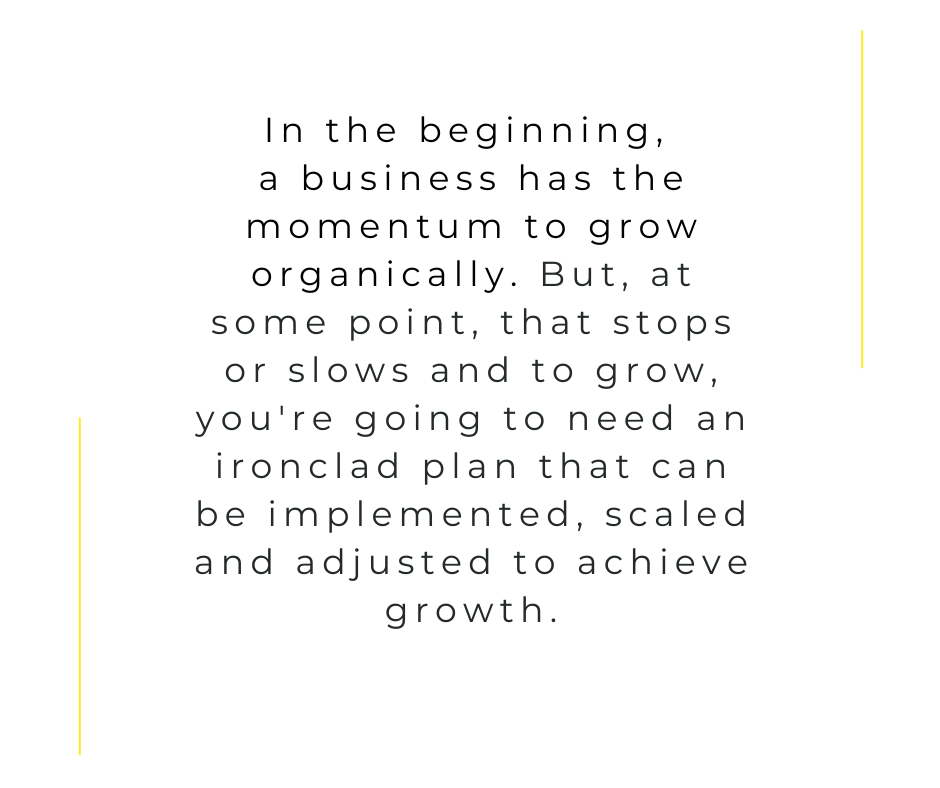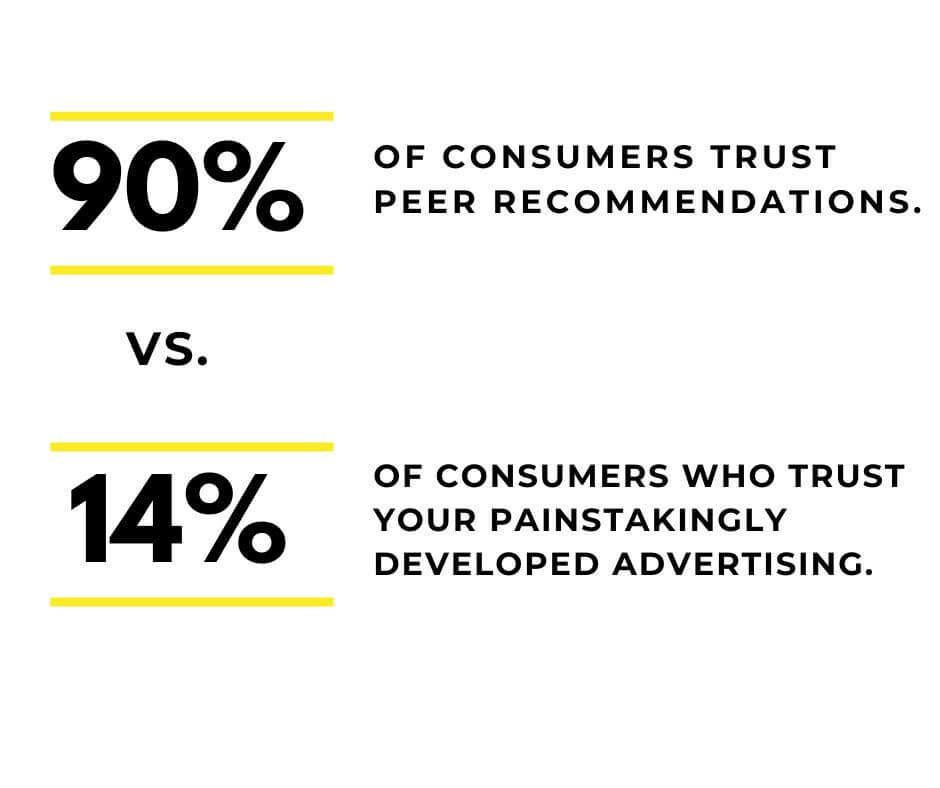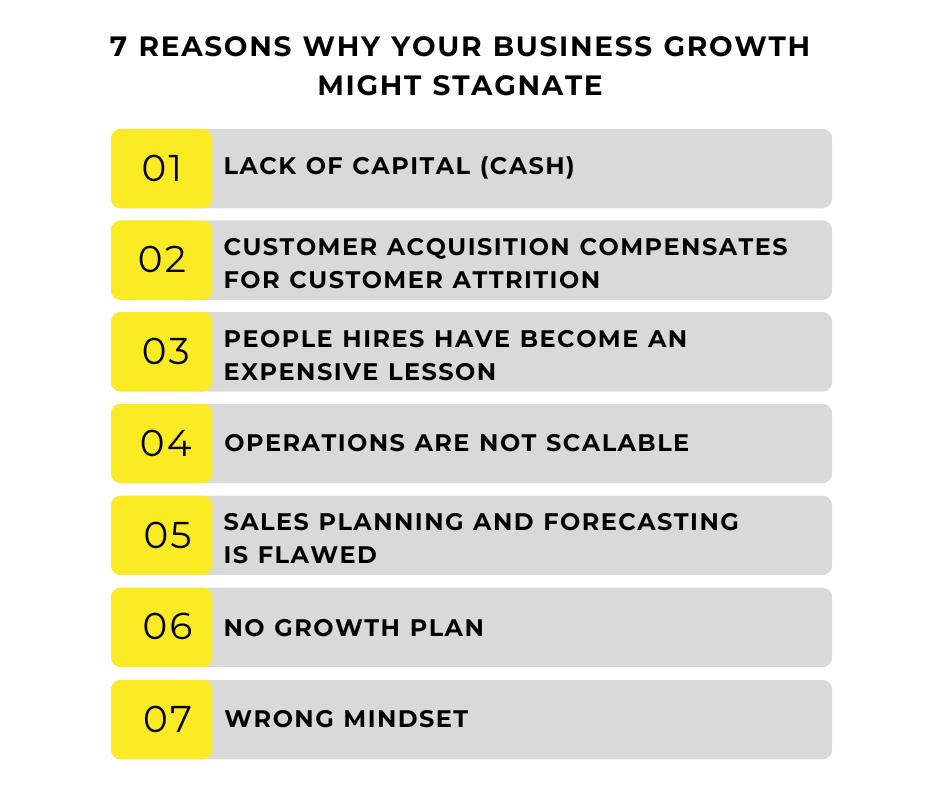In the early stages of a business’s growth, it’s like lilies on a lily pond. For the first few years, the business doubles year on year, and as the business owner or leader, you think, ‘I’ve got this nailed.’
Then, without warning, usually in years 3 or 4, you’re waiting with anticipation and excitement for the final set of year-end numbers to arrive.
They ping into your inbox, you take a read, and suddenly, a feeling of disappointment consumes your whole body—a gut-wrenching, sickening feeling inside as you sit back in your chair, deflated.
The little voice in the back of your head starts to chirp in with unhelpful comments;
“How come we have flat-lined or even gone backwards in our revenue and profitability?”
“I’ve worked harder than ever this year, and all for what!”
Your business growth has stagnated, and you’re unsure how or why.

Here are my top 7 reasons why your business growth might stagnate…and what you can do about it.
#1 Lack of capital (Cash)
Cash is vital for growth, and a lack of it starves businesses of the opportunity to realise their ambitions. Yes, you need enough working capital to pay the bills, salaries, and other regular monthly expenses, but all you do is get by each month.
To grow your business into something bigger and stronger, you need additional cash to fund the growth. If cash isn’t available to put down a deposit for new premises, purchase additional equipment, fund new marketing activity or recruits, then your business cannot grow. And if it’s not growing, then it’s either stagnating or, worse, falling behind.

Solution: Update your cash flow and income statements monthly. “What gets measured gets managed,” as the adage goes. If you have no idea of your business’s cash flow or income, you will never have a good grip on its finances. Once you have a thorough understanding of your cash flow, look at your cost base (cutting), pricing (increasing), products (stopping), roles (changing) and even financing (borrowing). All facets of your business should be put under the microscope.
#2 Customer acquisition compensates for customer attrition
Every business owner and leader risks obsessing about finding new customers while failing to focus on the customers they’ve already invested the time, effort, and money to acquire.
If you’re in the early stages of the business growth cycle, your focus might be acquiring new customers. If this is the case, great. Ensure that you have strategies to maximise and retain the new customers you bring in from day one.

Be aware of falling into the trap of becoming stuck in the acquisition stage. What you bring in through the front door of your business will only compensate for what you’re losing out the back door if you’re not looking after your existing customers and realising the value they bring.

Solution: Implement a customer retention plan that includes current attrition rates, known exit triggers (e.g., anniversary/renewal dates), trigger interventions (anniversary emails/calls), and other follow-up actions. Allocate sales meeting time to customer retention in addition to customer acquisition.
#3 People hires have become an expensive lesson
The right people in the right role can accelerate your growth journey exponentially. The wrong people can set you back twelve months in a heartbeat and be an expensive lesson both in terms of real cash and missed opportunities.
Most people’s challenges result from the wrong people in the wrong roles: skills gaps, poor behaviour, a bad attitude, a lack of desire to grow with the business, misalignment of values, or a disconnect between the individual and their line manager. The list goes on.
These types of people challenges take time and effort to investigate, work through, and resolve, and there is no guarantee that you’ll get back on track. This could, quite rightly, make you nervous and anxious about recruiting.
But unfortunately, you can’t build a great business alone. You need people to help you grow your business.

Solution: Be crystal clear about your vision and values and the type of person who matches them culturally. Draft a role profile for each new role, calling out requirements and expectations. Set a two-stage or even a three-stage interview process (depending on the role), and bring in an outsider with a fresh pair of eyes to sit in.
#4 Operations are not scalable
It doesn’t matter how great your business development & sales strategy is or how your marketing is geared up for a high-impact campaign; if your operations are weak or fundamentally not scalable, your business will fall over due to the increase in sales. It will become a disaster on several fronts.
You have to be able to deliver the basics. Fact.
A poor customer experience will turn new customers off immediately, removing any opportunity for repeat business. That high-impact marketing campaign I referred to earlier now looks like money down the drain. However, the danger lies in the poorly executed, inconsistent customer experience your existing loyal customers will receive. They will lose confidence in your ability to deliver and will go searching out your competitors, having asked for recommendations from their friends and family on social media.
If you don’t live up to your brand and service promise, you’ll lose significantly more than just a repeat purchase.

Solution: Know your current pain/pinch points and fix them before you launch any new initiatives. Automate processes where it is feasible to do so. Dial-up and down activity as the business demand peaks and troughs. Pause, take a breather and restart rather than continuing to plough on.
#5 Sales planning and forecasting is flawed
If operational excellence represents the organisation’s arteries, sales is the heartbeat that feeds your business.
However, in my experience, most businesses are poor at sales planning and forecasting, ultimately impacting growth.
Suppose you default to a ‘top-down’ only approach based on either the historical performance of the business over the last few years (‘We’ve grown roughly 10% year on year over the last three years, so let’s target sales with 10% growth again’) or simply your growth ambitions. In that case, I have no doubt you’ll have a gap between what you want to achieve and what you realistically can achieve.

Solution: Adopt a ‘top-down’ aspirational approach with a ‘bottom-up’ reality check approach using actual sales data (conversion rates, lead times, lag times) and allow the two ways of thinking to meet in the middle. Whilst this won’t resolve your gap, it will open the door to the sales planning that must occur today.
#6 No growth plan
A growth plan documents your aspirational vision, goals, and targets across a 3-year line of sight. It is supported by a 12-month detailed strategic priorities plan, which is usually then broken down into quarterly ‘bite-size’ deliverables.
One of the common challenges faced by businesses without a clear strategic plan is that their leaders and owners get sucked almost exclusively into short-term, reactive activities. Their time is dominated by constant tactical delivery and crisis management.
You are not thinking strategically if you haven’t got a growth plan. Most days, you will be head down working ‘IN’ the business rather than head up working ‘ON’ the business.

Solution: At a minimum, document your growth targets for the next 12 months and the top 5 things you must do to achieve them. Next, break the 12 months into quarterly plans focusing on the tactical tasks that must happen to achieve each one of those top 5 things over that quarter.
#7 Wrong mindset
When growing your business, there comes a point when you have a conscious awareness that you need to do things differently to achieve your growth aspirations. You’ve had this niggling feeling over the last few months, and you couldn’t quite put your finger on why you had it or what it was about.
You now know. You have become aware of the difference between being a technical expert and running a business and the need to become a business leader who leads the business.
Growing a business requires a leader who will create growth strategies, guide and shape their implementation, and win the hearts and minds of their people to deliver with passion and commitment, not because they have to, but because they want to.
You need to change your mindset to change the game.

Solution: Take the time to stop and objectively assess your business’s current state. This is an important first step in avoiding stagnation and achieving growth. Bring in outside expertise to coach/mentor you. You may have blindspots or be simply too close to the details to see what is happening.
Businesses can stagnate, and leaders usually only become aware when one (or several) of these 7 ‘signs’ come into focus.


